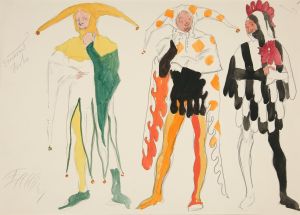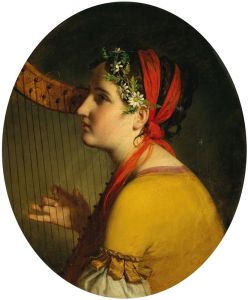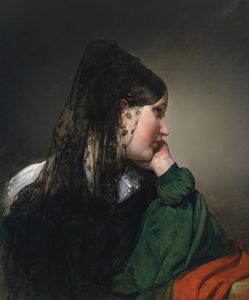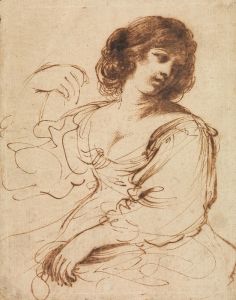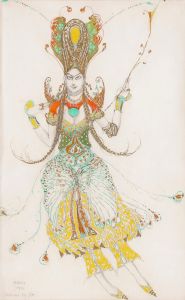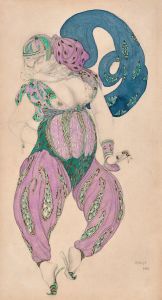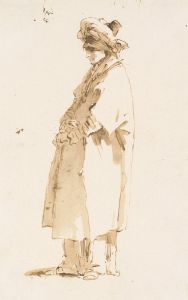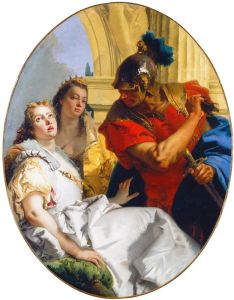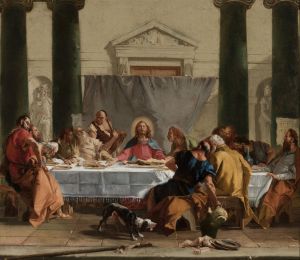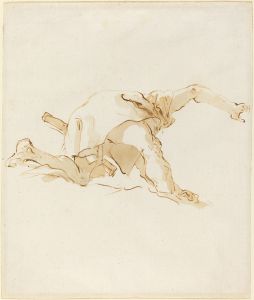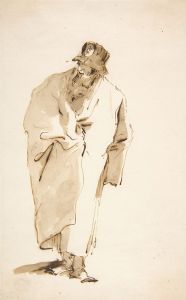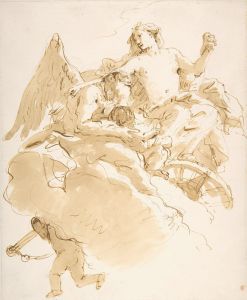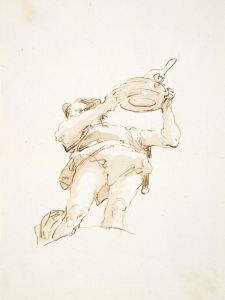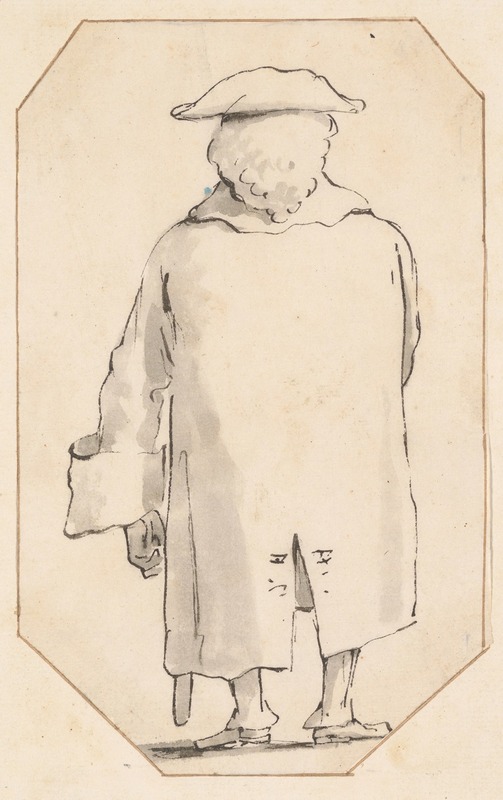
Caricature of a Man Wearing a Wig and a Tricorne, Seen from Behind
A hand-painted replica of Giovanni Battista Tiepolo’s masterpiece Caricature of a Man Wearing a Wig and a Tricorne, Seen from Behind, meticulously crafted by professional artists to capture the true essence of the original. Each piece is created with museum-quality canvas and rare mineral pigments, carefully painted by experienced artists with delicate brushstrokes and rich, layered colors to perfectly recreate the texture of the original artwork. Unlike machine-printed reproductions, this hand-painted version brings the painting to life, infused with the artist’s emotions and skill in every stroke. Whether for personal collection or home decoration, it instantly elevates the artistic atmosphere of any space.
Giovanni Battista Tiepolo, an Italian painter and printmaker, is renowned for his distinctive style and significant contributions to the Rococo movement. One of his lesser-known works, "Caricature of a Man Wearing a Wig and a Tricorne, Seen from Behind," exemplifies his skill in capturing character and humor through the medium of caricature. Although this particular piece may not be as widely recognized as his grand frescoes, it provides insight into Tiepolo's versatility and interest in the human form.
Tiepolo was born in Venice in 1696 and became one of the most prominent artists of the 18th century. He is best known for his large-scale frescoes that adorn the ceilings and walls of palaces and churches across Europe. However, Tiepolo also produced a number of drawings and prints, including caricatures, which were a popular form of entertainment and social commentary during his time.
The "Caricature of a Man Wearing a Wig and a Tricorne, Seen from Behind" is a pen and ink drawing that showcases Tiepolo's ability to convey personality and humor with minimal detail. The subject of the caricature is depicted from behind, wearing a wig and a tricorne hat, both of which were fashionable accessories in 18th-century Europe. The choice to depict the figure from behind is unusual and adds an element of mystery and intrigue to the piece.
Caricature as an art form involves exaggerating certain features or characteristics to create a humorous or satirical effect. Tiepolo's caricatures often poked fun at the fashion and social norms of his day, and this piece is no exception. By focusing on the back of the figure, Tiepolo draws attention to the elaborate wig and hat, which were symbols of status and sophistication but also subjects of satire due to their ostentatious nature.
Tiepolo's caricatures were not merely humorous sketches; they also reflected the artist's keen observation of human behavior and societal trends. His ability to capture the essence of his subjects with a few deft strokes is evident in this drawing. The simplicity of the lines and the economy of detail highlight Tiepolo's mastery of the medium and his understanding of caricature as a form of expression.
While Tiepolo's caricatures may not have been as widely celebrated as his frescoes, they remain an important part of his oeuvre, offering a glimpse into the lighter side of his artistic practice. These works demonstrate his ability to engage with contemporary culture and provide commentary on the world around him.
In summary, "Caricature of a Man Wearing a Wig and a Tricorne, Seen from Behind" is a testament to Giovanni Battista Tiepolo's skill as a draftsman and his interest in the art of caricature. Through this drawing, Tiepolo captures the fashion and humor of his time, providing a unique perspective on the social dynamics of 18th-century Europe.





